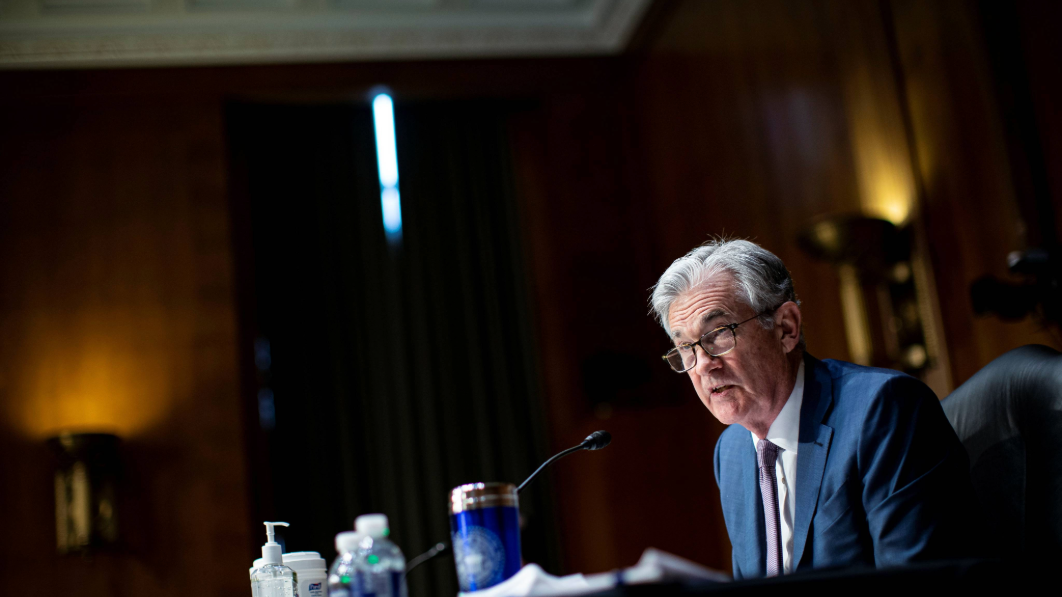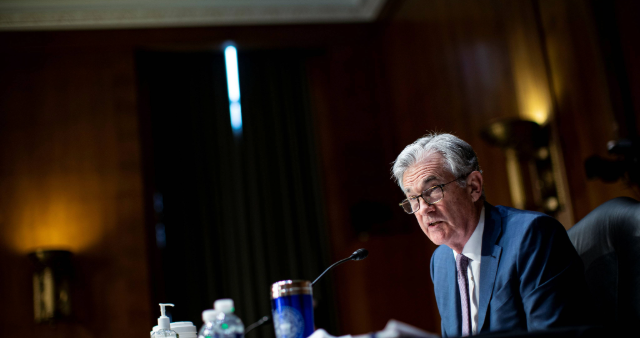The US Federal Reserve (Fed) has convened once again and met market expectations regarding its key interest-rate decision. Specifically, this means that US key interest rates will remain unchanged for the time being with the Federal Funds Rate remaining in the range of 4.25 to 4.5 per cent, where it has been since December 2024.
The reasons for this decision are obvious: on the one hand, looking in the rear-view mirror, there is (still) no pressing need to lower key interest rates. At 2.6 per cent, US core inflation (measured by the Personal Consumption Expenditures (PCE) Price Index) remained above the two per cent inflation target for the 49th month in a row in March 2025. At the same time, the labour market continues to look robust, with an unemployment rate of 4.2 per cent.
At this point, the decline in US gross domestic product (GDP) seen in the first quarter of 2025 should not be overinterpreted. After all, US companies and consumers drove up imports of goods during this period in anticipation of possible tariffs, and the mathematical consequence of higher imports was negative GDP growth. In this respect, there is no immediate need (yet) to consider interest-rate cuts in favour of the Fed’s second objective – full employment.
It is not only hindsight that makes the Fed’s continued wait-and-see stance seem plausible. Looking ahead, there are currently no crystal-clear arguments that would have made an adjustment of key interest rates absolutely necessary. Uncertainty remains enormous. Fed Chair Jerome Powell must steer his central bank through a fog of his own making. The erratic announcements made by US President Donald Trump in April went far beyond trade policy and its implications for inflation.
“Independence is part of the core identity of a central bank” (Joachim Nagel, President of the Deutsche Bundesbank)
Nothing less than the Fed’s independence was recently up for debate. “Powell’s termination cannot come fast enough,” Trump wrote on his Truth Social platform on 17 April 2025, reinforcing his repeated calls for interest-rate cuts. Although the US president backtracked a few days later, a bitter aftertaste remains. The recent record high gold prices should also be viewed against this backdrop – as an initial warning signal.
However, the possible implications of such a debate about central bank independence are difficult to grasp. There have been heated debates between fiscal and monetary policymakers in the past. For example, former Fed Chair Paul Volcker, who raised key interest rates to 20 per cent at times in the early 1980s to combat double-digit inflation, was confronted with criticism from the Reagan administration (Volcker's Announcement of Anti-Inflation Measures | Federal Reserve History).
So how should we deal with the latest debates? Looking back at history, a generally formulated approach could be to exercise caution when it comes to deriving concrete courses of action based on the current controversies (at least at this point in time).
A big question mark
However, it is not advisable to downplay the current situation. From the perspective of foreign investors in particular, the question currently arises as to what extent a possible (prolonged) loss of confidence could affect the status of the US dollar. In this context, there are many reasons to believe that the function of the US dollar as the world's reserve currency cannot be called into question overnight. One example is the fact that the USA and the US dollar are more integrated into the global financial system than any other currency.
At the end of last year, foreign investors held US assets worth a good USD 60 trillion. In the first instance, this means that very few market participants have an interest in a sudden decline in the value of the US dollar (or US dollar assets) – a reassuring factor, because this high degree of integration creates a broad global consensus on the value of the US dollar and can therefore serve as a stabilising factor.
At the same time, it would of course be also naive to rely solely on such a convergence of interests. Two things are clear: firstly, the predictability of political decision-makers in the USA has declined recently. It is not only the rivalry with China, the world’s second-largest economy, which has resulted in tariffs of over 100 per cent, that gives cause for concern. Second, from the perspective of a euro investor, the US dollar has so far reacted only to a limited extent to the recent escapades. The euro, for example, is still trading several percentage points weaker than at the height of the Coronavirus pandemic less than five years ago. At that time, one euro was worth a good USD 1.20. Any exchange-rate risks and opportunities are always difficult to quantify. However, there is little doubt that the (political) risks inherent in the US dollar have increased significantly in recent weeks.
What really counts
In an environment where presidential rhetoric towards the Fed can raise questions about its independence, a “simple” interest-rate decision loses some of its significance. After all, who cares whether interest rates are 25 basis points higher or lower when there is a potential loss of confidence in the monetary system? So, is the interest-rate decision secondary in such an environment?
Well, it’s sometimes a matter of perspective whether you see the glass as half empty or half full. After all, it could also be argued that the current interest-rate decision is particularly valuable precisely because the Fed was under political pressure to cut interest rates. It has withstood this pressure. The decision to keep interest rates steady shows that the Fed is sticking to its data-dependent approach. After all, it makes sense not to cut interest rates further for now, given persistently high inflation, an intermittently robust labour market and a cloudy outlook.
This interest-rate decision was therefore by no means secondary – it has strengthened confidence in the Fed’s independence.
LEGAL NOTICE
One of the purposes of this publication is to serve as advertising material.
The information contained and opinions expressed in this publication reflect the views of Flossbach von Storch at the time of publication and are subject to change without prior notice. Forward-looking statements reflect the judgement and future expectations of Flossbach von Storch. Actual performance and results may, however, differ materially from such expectations. All information has been compiled with care. However, no guarantee is given as to the accuracy and completeness of information and no liability is accepted. The value of any investment can fall as well as rise and you may not get back the amount you invested
This publication does not constitute an offer to sell, purchase or subscribe to securities or other assets. The information and estimates contained herein do not constitute investment, legal and/or tax advice or any other form of recommendation. In particular, this information is not a replacement for suitable investor and product-related advice and, if required, advice from legal and/or tax advisers.
This publication is subject to copyright, trademark and intellectual property rights. The reproduction, distribution, making available for retrieval, or making available online (transfer to other websites) of the publication in whole or in part, in modified or unmodified form is only permitted with the prior written consent of Flossbach von Storch.
Past performance is not a reliable indicator of future performance.
© 2025 Flossbach von Storch. Alle Rechte vorbehalten.




